Introduction
The tap of an app brings your favorite meal to your door—whether it’s a burger from DoorDash in Chicago or biryani from Swiggy in Mumbai. E-commerce and food delivery have revolutionized dining in the US and India, with platforms like Uber Eats, Zomato, Instacart, and Dunzo serving millions daily. But as someone who’s savored the convenience (and once regretted a warm takeout order), I know food safety isn’t a given. In April 2025, ensuring food safety in food delivery is a top priority in both nations, where bustling markets and diverse vendors create unique challenges. Let’s unpack the risks, solutions, and steps we can all take to make every meal safe, from New York to New Delhi.
Why Food Safety Is Critical in US and India Deliveries
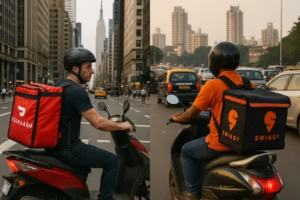
Top Food Safety Challenges in the US and India
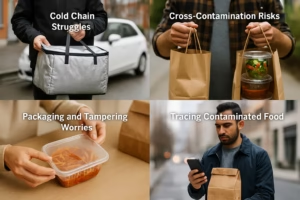
1.Cold Chain Struggles
Temperature control is a cornerstone of food safety. Perishables—think shrimp tacos in the US or paneer curry in India—need to stay below 40°F (4°C) to block pathogens. But traffic in Mumbai or summer heat in Texas can break the cold chain. I once got a soggy ice cream delivery in Bangalore, a red flag for food safety in food delivery services. A 2024 US study showed 28% of perishable orders hit unsafe temperatures, while India’s FSSAI reported similar issues in urban hubs. Insulated bags help, but not all couriers use them consistently.
2.Cross-Contamination Risks
Handling multiple orders invites trouble. In the US, a DoorDash courier might carry BBQ ribs and a vegan bowl in one bag, risking allergen transfer. In India, Swiggy riders juggling non-veg and Jain orders face similar food safety concerns. Unclean bikes or drop-off spots—common in rainy Delhi or busy Los Angeles—add germs. Single-use liners and sanitizing protocols are catching on, but gaps remain in ensuring safe food delivery practices across both nations.
3.Packaging and Tampering Worries
Packaging protects your food, but it’s vulnerable. Rough handling during Manhattan rushes or Hyderabad’s crowded streets can crack containers, exposing meals to contaminants. Tampering’s a fear, too—if seals aren’t secure, trust erodes. Both Uber Eats (US) and Zomato (India) now use tamper-evident stickers, boosting food safety during delivery, but damaged packages still sneak through. Sturdier designs are a must for food safety standards.
4.Tracing Contaminated Food
When recalls hit, speed matters. The US saw a 2024 E. coli outbreak tied to delivered salads, slowed by complex vendor networks. India faced a listeria scare with cloud kitchen meals, equally hard to trace. Blockchain, praised by The World Health Organization, tracks ingredients fast, but adoption lags in both markets, delaying food safety fixes.
5.Vendor Hygiene Variations
Hygiene isn’t universal. US chains like Chipotle often ace food safety audits, but smaller vendors may skimp on training. In India, roadside stalls on Dunzo might lack proper equipment. A 2023 US audit flagged 30% of delivery vendors for hygiene lapses; India’s FSSAI noted 35% noncompliance in urban kitchens. Platforms struggle to monitor remotely, making food safety in online delivery a work in progress.
6.Consumer Handling Errors
Your role kicks in at delivery. Leaving food out—whether a pizza in Seattle or dosa in Chennai—lets bacteria grow. I learned this after a curry sat too long, leading to a rough night. Many don’t know to eat perishables within 30 minutes or refrigerate them, so apps are adding safe food handling tips to keep food safety intact.
Regulations: US and India Perspectives
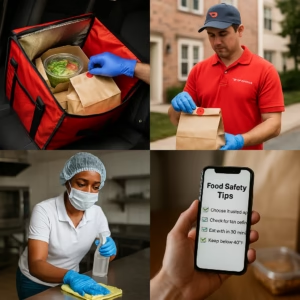
Rules haven’t kept pace with delivery’s boom. In the US, the FDA’s Food Safety Modernization Act sets standards, but third-party couriers and cloud kitchens slip through cracks. India’s FSSAI rolled out 2024 delivery guidelines, mandating hygiene and packaging checks, yet enforcing them across millions of vendors is tough. Both nations face global inconsistencies—US apps operate in India, complicating food safety in food delivery. Experts call for unified, delivery-specific laws to ensure food safety standards hold firm.
Innovations for Safer Deliveries
Technology is stepping up. Smart packaging, like temperature-sensitive labels, flags issues instantly—used by Instacart in the US and BigBasket in India. IoT sensors, piloted by Uber Eats (US) and Zomato (India) in 2025, track conditions live, safeguarding food safety during delivery. Blockchain speeds recalls by tracing sources in seconds. Platforms are also certifying vendors—DoorDash’s US hygiene program and Swiggy’s India audits raise the bar. Apps now share safe food delivery tips, like “chill at 40°F,” empowering consumers in both markets to lock in food safety.
How to Ensure Food Safety in the US and India
Everyone’s got a role in food safety in e-commerce and food delivery. Consumers, pick trusted platforms—DoorDash or Instacart in the US, Swiggy or Zomato in India—known for vetting vendors. Check tamper-proof seals; if a bag’s torn, report it with a photo. Eat perishables within 30 minutes or refrigerate to maintain food safety. Vendors, keep kitchens spotless—US food trucks or Indian cloud setups alike. Train staff on food safety practices and use secure packaging. Source from certified suppliers to avoid recalls. Platforms, audit vendors regularly, equip couriers with coolers (vital in India’s heat or US summers), and push safe food handling advice via apps.
Food Safety FAQs
Curious about food safety in food delivery? Here’s the scoop:
- Why is food safety critical in US and India deliveries?
Complex logistics—shared bags, hot climates—heighten contamination risks in both markets. - How can consumers ensure food safety?
Choose verified apps, check seals, eat within 30 minutes, and store at 40°F (4°C). - What’s a platform’s food safety role?
They vet vendors, monitor transit, and enforce hygiene for safe food delivery. - Are there food safety rules for delivery?
US’s FDA and India’s 2024 FSSAI guidelines apply, but enforcement varies. - What tech boosts food safety?
Smart packaging, blockchain, and sensors ensure safer meals in both nations.
Toward a Safer Food Delivery Future
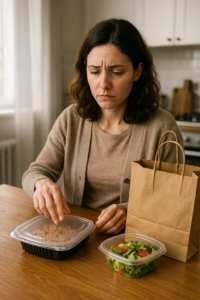
In 2025, food safety in food delivery is a shared mission across the US and India. From smart sensors to FSSAI audits, we’re tackling risks head-on. But it’s on us—consumers, vendors, platforms—to make food safety practices stick. By choosing wisely, acting fast, and pushing for better, we can ensure every meal, from Miami to Hyderabad, is safe and satisfying.
Let’s prioritize food safety!
✅ Consumers: Select apps like DoorDash (US) or Zomato (India), inspect orders, and chill food promptly.
✅ Vendors: Sanitize kitchens, train teams, and pack securely.
✅ Platforms: Audit vendors, innovate tech, and share safe food delivery tips
Have a food safety trick or story from the US or India? Comment below or share this guide on X with #FoodSafety to spark change. Together, we’ll make safe meals the norm!
Read more articles about food safety
Food Safety Compliance: 5 Proven Steps to Boost and Master GMP & GHP
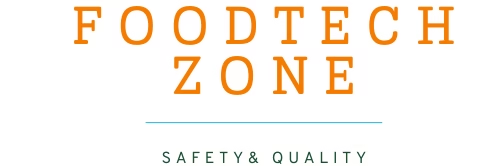
Pingback: How Long Food Lasts in the Fridge: 7 Must-Know Tips for Apples & Chicken - foodtechzone